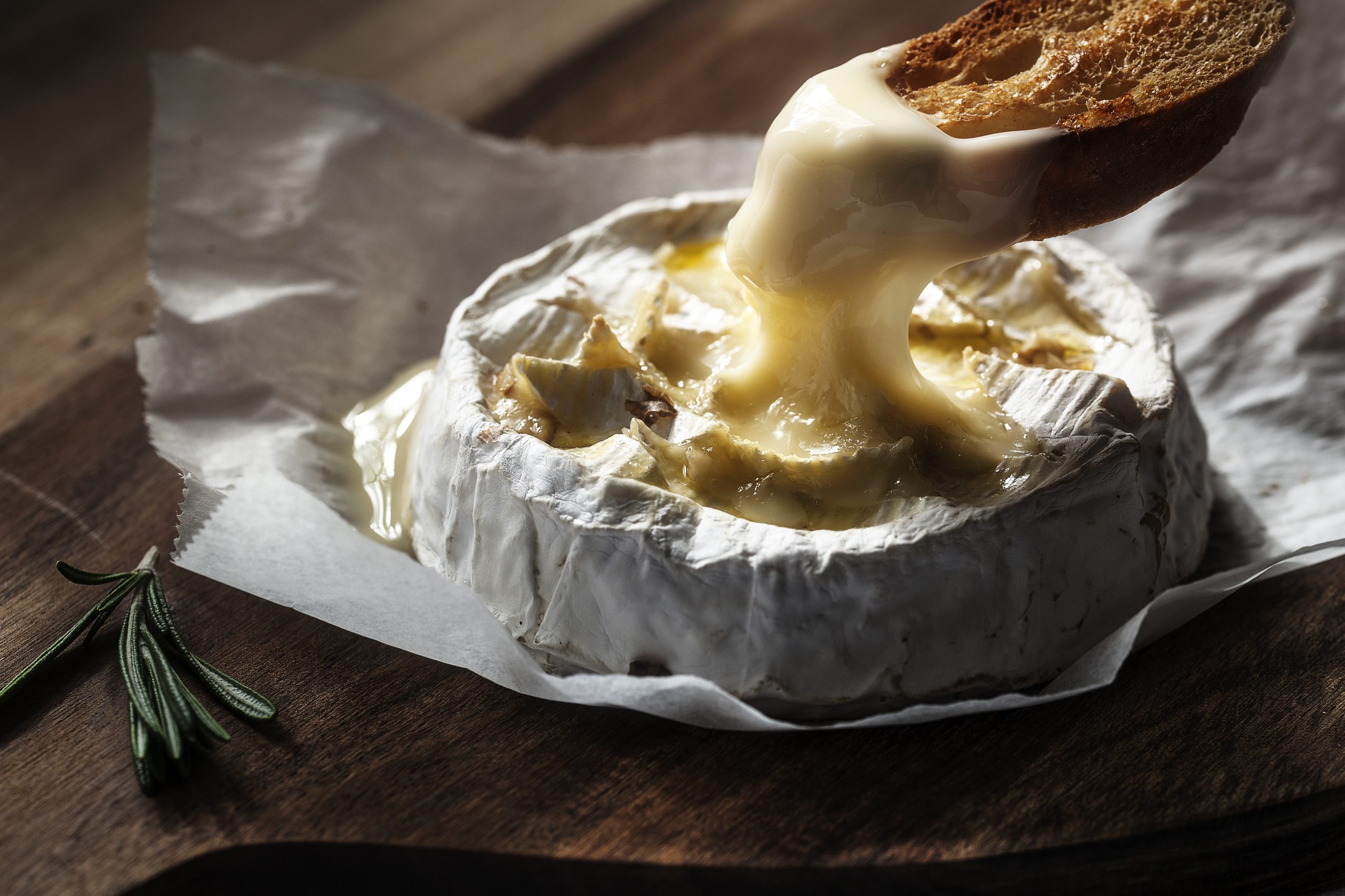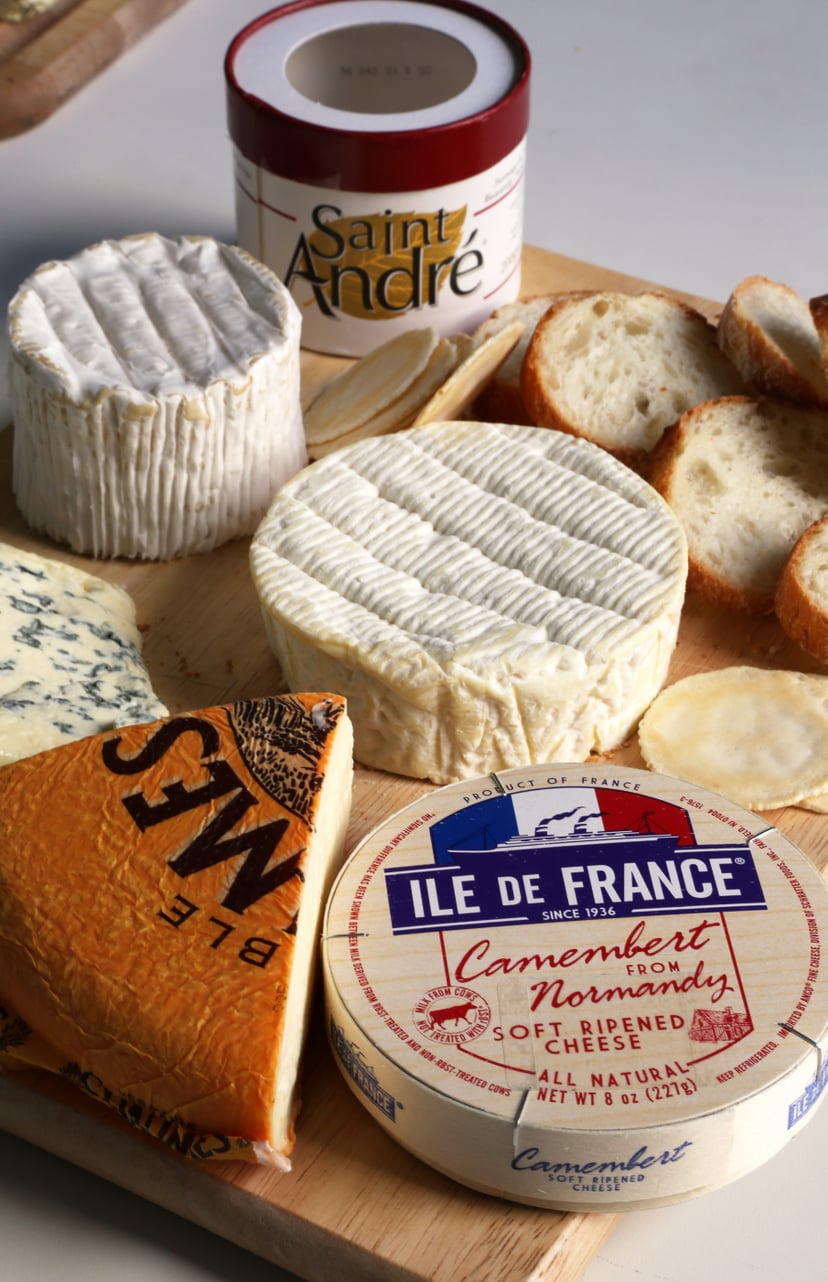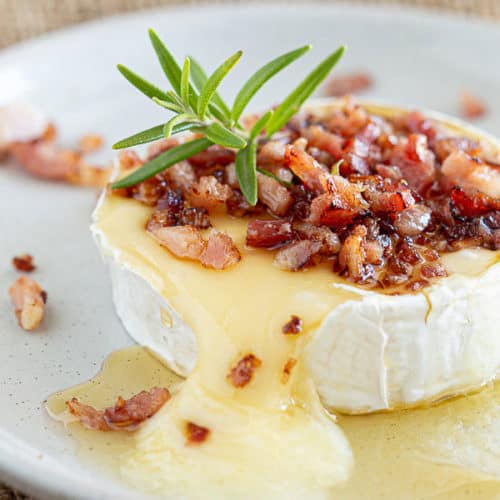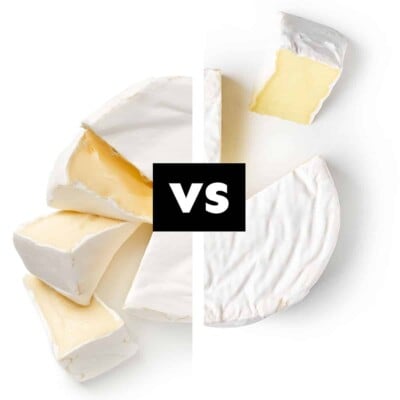
Introduction
Background on Camembert Cheese and Brie
French Brie and Camembert cheeses are renowned for their unique characteristics and rich histories. Brie, originating from the Île-de-France region, is a versatile cheese known for its bloomy rind and pale yellow interior. Its flavors can vary from buttery and earthy to savory and nutty, depending on its ripeness.
Camembert cheese, on the other hand, hails from the Normandy region of France. It features a creamy texture with a white, edible rind. The flavor profile of Camembert is often described as rich, earthy, and slightly tangy, making it a favorite among cheese enthusiasts.
Significance of Camembert and Brie in the cheese world
Both Brie and Camembert cheeses hold significant places in the cheese world. They have captivated global audiences with their distinct flavors, textures, and aromas. These cheeses represent a long-standing tradition of French cheesemaking expertise and craftsmanship.
While Brie is treasured for its buttery and nutty notes, Camembert stands out for its creamy texture and complex flavor profile. The popularity of these cheeses extends beyond France, as they are enjoyed in various culinary contexts worldwide, from cheese platters to gourmet dishes.
With their rich histories and unique qualities, French Brie and Camembert cheeses continue to be celebrated for their elegance and versatility in the world of gourmet cuisine.

Camembert Cheese vs. Brie: Origins
Camembert Cheese: Origin, History, and Tradition
French Camembert cheese, originating from the picturesque region of Normandy, boasts a rich history steeped in tradition. This creamy delicacy is characterized by its white, velvety rind and a flavor profile that is often described as earthy and slightly tangy. The distinct taste of Camembert can be attributed to the lush pastures of Normandy, where dairy cows graze, imparting unique flavors to the milk used in the cheese-making process.
Brie Cheese: Origin, History, and Cultural Significance
In contrast, Brie cheese traces its roots back to the historic region of Brie in northern France. Known for its bloomy rind and pale yellow interior, Brie offers a versatile flavor profile that ranges from buttery and savory to nutty. The cultural significance of Brie lies in its centuries-old tradition of cheese-making, with artisans carefully crafting each wheel to perfection. The distinct terroir of the Brie region contributes to the cheese's unique character and appeal to cheese connoisseurs worldwide.[5][6][7][8]

Texture and Flavor Profiles
Camembert Cheese: Creamy Texture and Earthy Flavor
French Camembert cheese is renowned for its creamy texture and earthy flavor profile. The cheese has a dense and velvety texture, making it slightly thicker compared to its counterpart, Brie. The earthy notes in Camembert cheese stem from the lush pastures of Normandy, where the dairy cows graze, enhancing the flavor of the milk used in the cheese-making process. This results in a more rustic and robust taste that appeals to those seeking a stronger cheese experience.
Brie Cheese: Smooth Texture and Buttery Notes
On the other hand, Brie cheese is known for its smooth texture and buttery notes. The cheese has a softer and creamier consistency compared to Camembert, with a luxurious mouthfeel that melts in the mouth. The flavor profile of Brie ranges from rich and buttery to slightly nutty, offering a more refined taste experience. The tradition of cheese-making in the Brie region ensures that each wheel of Brie exemplifies the perfect balance of flavors and textures, making it a sought-after cheese for culinary enthusiasts worldwide.[9][10][11][12]

Production Process
Camembert Cheese: Traditional Making Process
Camembert cheese follows a traditional making process that sets it apart from Brie. The production of Camembert involves using stronger lactic starters, which are integrated more frequently throughout the cheese-making process. This meticulous approach results in a cheese with a robust flavor and aroma, characteristic of Camembert. Additionally, the cheese-making process of Camembert emphasizes the importance of the lush pastures of Normandy, where the dairy cows graze, imparting a distinct earthy flavor to the final product.
Brie Cheese: Techniques and Aging Methods
In contrast, the production of Brie cheese involves unique techniques and aging methods that distinguish it from Camembert. Brie incorporates cream into the cheese-making process, leading to a higher fat content compared to Camembert. This addition of cream gives Brie its smooth texture and buttery notes, contributing to its luxurious mouthfeel. Furthermore, the techniques employed in the Brie region ensure that each wheel of cheese achieves a perfect balance of flavors and textures, making it a favored choice among culinary enthusiasts worldwide.[13][14][15][16]

Pairing Suggestions
Camembert Cheese: Ideal Pairings for Wine and Accompaniments
When it comes to Camembert cheese, the traditional making process results in a cheese with a robust flavor and aroma that pairs exceptionally well with certain wines and accompaniments. For a delightful wine pairing, opt for fruity and aromatic options like Beaujolais or Chenin Blanc. These wines complement the rich flavors of Camembert, creating a harmonious taste experience. Additionally, consider pairing Camembert with sweet accompaniments such as fig spread, caramelized onions, or a crusty baguette to enhance the overall flavor profile of the cheese.
Brie Cheese: Perfect Combinations with Fruits and Nuts
In contrast to Camembert, Brie cheese incorporates cream into the cheese-making process, resulting in a luxurious mouthfeel with buttery notes. When it comes to pairing Brie cheese, consider combining it with a more mature Brie with a full-bodied Chardonnay or an earthy red wine like Merlot. Fruits like berries and apples can complement the creamy texture of Brie, while a drizzle of honey can add a touch of sweetness to the experience. Nuts such as walnuts or almonds also make excellent accompaniments to Brie, enhancing its flavor profile and providing a satisfying crunch alongside the creamy cheese.[17][18][19][20]

Culinary Uses
Camembert Cheese: Cooking and Serving Suggestions
Camembert cheese, with its robust flavor and aroma, is a versatile ingredient in various culinary applications. When it comes to cooking, Camembert can be used in baked dishes like tarts or served as a melted topping for bread or potatoes. Its creamy texture also lends itself well to sauces or soups, adding a rich and savory element to the dish. When serving Camembert as a standalone cheese, consider pairing it with fruits like pears or grapes, nuts such as pecans, and crackers or crusty bread for a delightful cheese platter experience.
Brie Cheese: Versatile Culinary Applications in Recipes
Known for its creamy and buttery flavor profile, Brie cheese is a favorite among chefs for its versatility in recipes. Incorporate Brie into dishes like pasta, salads, or even sandwiches for a touch of richness and creaminess. Brie also melts beautifully, making it a perfect choice for grilled cheese sandwiches or as a topping for burgers. When serving Brie on a cheese platter, combine it with dried fruits, honey, or jams to enhance its flavors and create a balanced tasting experience.[21][22][23][24]

Nutritional Value
Camembert Cheese: Nutrients and Health Benefits
When it comes to nutritional content, **Camembert** cheese offers a rich source of fat, protein, and calcium. It contains approximately **24.26g of fat** per 100g serving, making it a good option for those looking to incorporate healthy fats into their diet. Additionally, Camembert provides a decent amount of protein and calcium, essential for bone health and muscle function. With its creamy texture and robust flavor, Camembert can be a versatile ingredient in various dishes, adding a savory and indulgent touch to your meals.
Brie Cheese: Nutritional Content and Dietary Considerations
**Brie** cheese, known for its creamy and buttery profile, also offers similar nutritional benefits to Camembert. It contains around **27.68g of fat** per 100g serving, making it slightly higher in fat content compared to Camembert. Brie is also a good source of protein and calcium, making it a nutritious addition to your diet. Its versatility in recipes allows for creative culinary applications, from pasta dishes to grilled cheese sandwiches. When incorporating Brie into your meals, consider balancing its richness with complementary flavors like fruits, nuts, and honey for a well-rounded dining experience.[25][26][27][28]
Popularity and Global Influence
Camembert Cheese: Worldwide Appreciation and Accessibility
Camembert cheese is renowned worldwide for its velvety texture and distinct flavor profile. With its origins in the Normandy region of France, Camembert has garnered a strong following among cheese enthusiasts globally. Due to its popularity, Camembert is readily available in supermarkets and specialty cheese shops, making it easily accessible for consumers looking to experience its creamy goodness. The cheese's versatility in culinary applications has contributed to its widespread appreciation, with chefs and home cooks alike incorporating it into a variety of dishes to elevate flavors.
Brie Cheese: Cultural Impact and Market Demand
Brie cheese holds a significant cultural impact in the culinary world, symbolizing sophistication and indulgence. Originating from the Île-de-France region in France, Brie has become synonymous with luxury and refinement, making it a sought-after choice for cheese connoisseurs. The cheese's rich history and unique production methods have contributed to its high market demand, with Brie being a staple on cheese boards and upscale menus worldwide. Its creamy texture and buttery taste make it a versatile ingredient that complements a wide range of accompaniments, further fueling its popularity in global cuisine.
Conclusion
Key Takeaways on Camembert Cheese vs. Brie
Camembert Cheese: Known for its velvety texture and distinct flavor profile, Camembert cheese has gained global recognition and is easily accessible in supermarkets and specialty stores. Its versatility in culinary applications has made it a favorite among chefs and home cooks looking to enhance their dishes.
Brie Cheese: Symbolizing sophistication and indulgence, Brie cheese holds a significant cultural impact in the culinary world. Originating from the Île-de-France region in France, it is a sought-after choice for cheese connoisseurs due to its rich history and unique production methods.
Recommendations for Cheese Connoisseurs and Food Enthusiasts
For those seeking a rich and earthy taste experience, Camembert cheese is an excellent choice. Its rustic flavor and texture can add depth to various dishes, making it a versatile ingredient in cooking.
On the other hand, if you prefer a refined and smooth taste, Brie cheese is the ideal option. Its buttery texture and luxurious flavor make it a perfect addition to cheese boards and upscale menus.
Understanding the nuances between Camembert and Brie can elevate your culinary experiences and bring a touch of French sophistication to your dining table. Bon appétit!
DK FAQ MARK
FAQ about Camembert Cheese vs Brie: Creamy Cheese Delights
Q: What is the main difference between Camembert cheese and Brie cheese?
A: The main difference lies in their geographical origins. Camembert hails from Normandy, France, while Brie comes from the Brie region in northeastern France. Additionally, Camembert is typically creamier and earthier in flavor compared to Brie.
Q: How do the textures of Camembert and Brie differ?
A: Camembert is known for its runnier and gooey texture, while Brie tends to be slightly firmer towards the center but still creamy overall. Camembert often has a more pronounced mushroomy flavor due to its ripening process.
Q: Can Camembert and Brie be used interchangeably in recipes?
A: Yes, they can be substituted for each other in most recipes that call for one or the other. However, it's essential to note that their distinct flavors and textures might slightly alter the final outcome of the dish.
Q: Are there any specific serving or pairing recommendations for Camembert and Brie?
A: Camembert pairs well with fruits like apples, pears, and berries, as well as nuts and crusty bread. Brie complements honey, jam, and dried fruits excellently. Both cheeses go beautifully with sparkling wines or light red wines.
Q: How should Camembert and Brie be stored to maintain their freshness?
A: To keep the cheeses fresh, store them in the refrigerator in their original packaging or wrap them in wax paper or parchment paper. It's best to consume them within a few days of purchase for optimal flavor and texture.
Q: Can the rinds of Camembert and Brie be eaten?
A: The rind of both cheeses is entirely edible and can be enjoyed. However, some people prefer to remove the rind before consuming the cheese, so it ultimately comes down to personal preference.

Gourmet Tiger, a culinary sensation, was established with a vision to delight taste buds and create unforgettable dining experiences. Specializing in cakes, casseroles, lunch, catering, and more, Gourmet Tiger has become a household name synonymous with exquisite flavors and impeccable service. Since its inception, Gourmet Tiger has been dedicated to crafting delectable treats and savory dishes that exceed expectations. Their commitment to using only the finest ingredients and innovative culinary techniques has set them apart as a leader in the food industry.